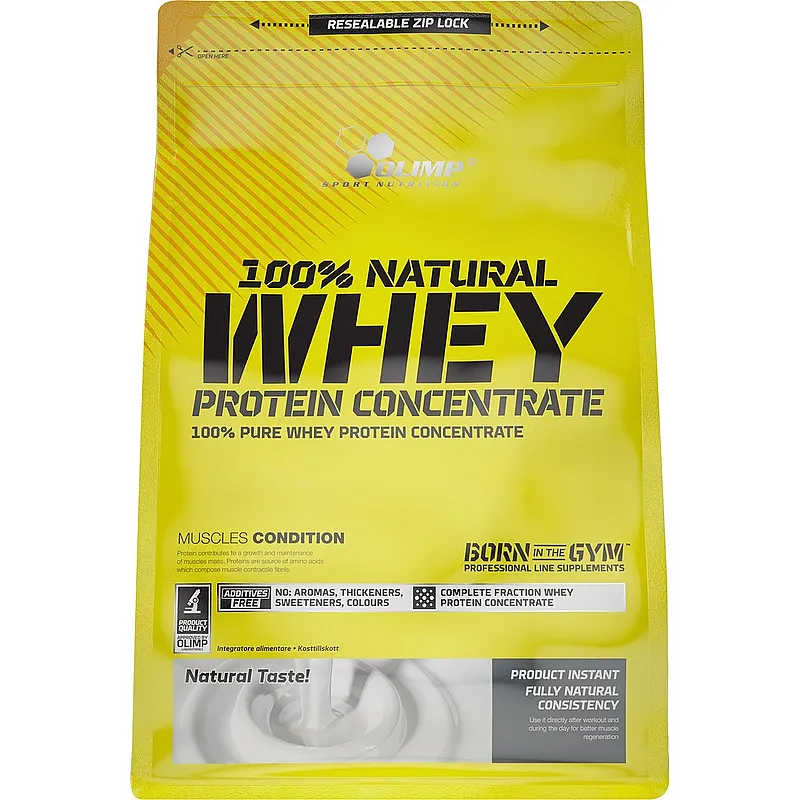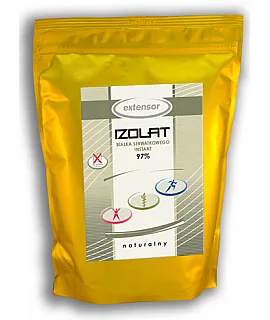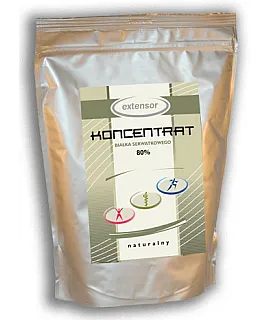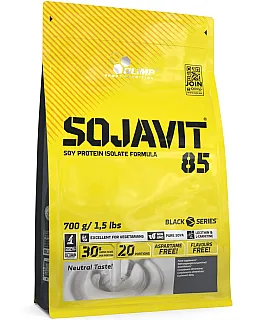- 100% premium whey protein concentrate
- Support in building muscle mass
- Excellent solubility
- No unnecessary additives
- Ideal aminogram
- Natural flavor
Olimp 100% Natural Whey Protein Concentrate is a dietary supplement recommended for physically active people who need a fast absorbing source of high quality, concentrated protein.
Whey protein comes from milk and is the product left over after cheese is made from it. After micro- or ultra-filtration, the whey is reduced to a protein concentrate. Thanks to the aforementioned process, the concentrate is stripped of most of the lactose and fat. It is recommended for people who want to provide protein in a quickly digestible form.
Excellent solubility and assimilation
Traditional foods rich in protein may contain elements that reduce its bioavailability. By selecting it in supplement form, when you consume protein after a workout you are assured that anticatabolic and anabolic processes will begin as quickly as possible. In addition, the concentrate is easily soluble in water or milk and does not form lumps. The Natural version is an excellent option for those who do not like protein flavor variants and prefer to mix the protein by itself with fruit, for example.
Support in building muscle mass
Whey protein concentrate is an ideal support for building muscle mass. It is a complete protein and contains all the essential amino acids. Taken after a workout, the concentrate is absorbed very quickly and the nutrients reach the muscle cells in the shortest possible time.
In conclusion, Olimp 100% Natural Whey Protein Concentrate is a dietary supplement that allows you to quickly supplement protein with an excellent amino acid profile. It is easily absorbed, so it is recommended to consume it especially post-workout. It has a natural taste, and thanks to its negligible fat or carbohydrate content, it will also be perfect for reduction.



